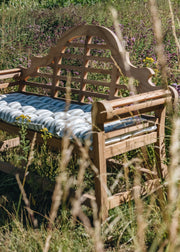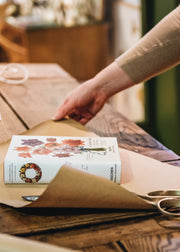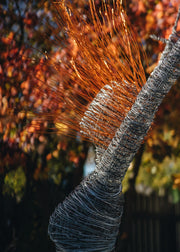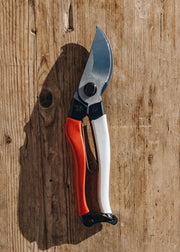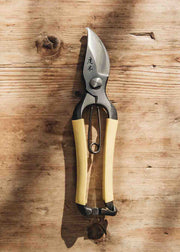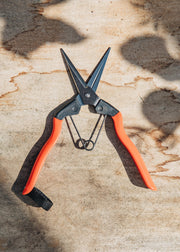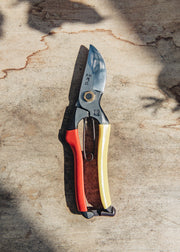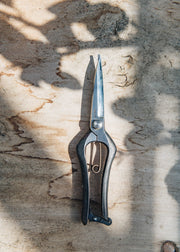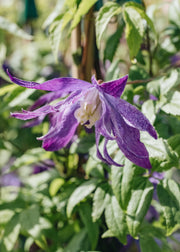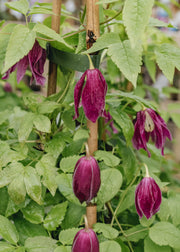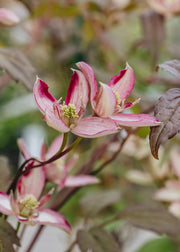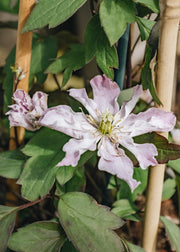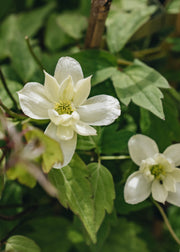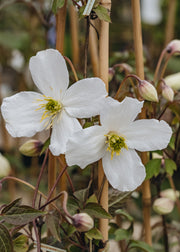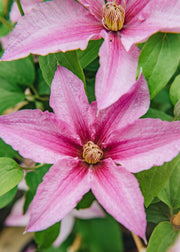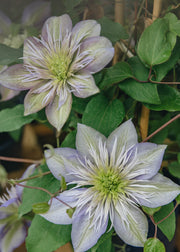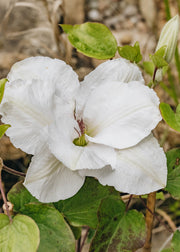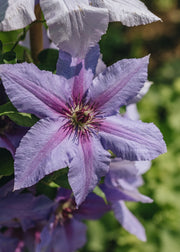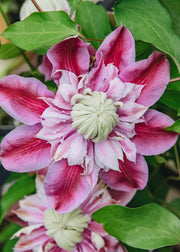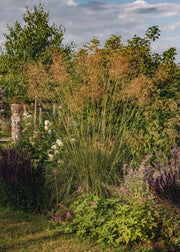How to: Prune Clematis
A beautiful clematis is a wonder to behold but left unchecked can soon become a tangle of bare stems, flowering only at the top. To encourage strong growth but keep it in check, it is worth learning how and when to cut it back. It may feel daunting, but once you determine which type of clematis you have, the course of action will become much clearer.


There are many types of clematis, and it is important to establish which group your clematis belongs to, as that will indicate when and how you trim. If you’ve lost the label on your plant, it is still possible to identify through its behaviour and form. (Tip: if you are just starting your clematis planting, by choosing one from each of the groups, you will have flowers from spring all the way through to early autumn!)
Tools for the job
These clematis will flower early, usually in the spring, as the flowers form on the stem growth from the previous year. These include clematis albina, armandii, cartmanii, cirrhosa, macropetala and montana varieties.
For these clematis, lightly prune after flowering when the risk of frost has passed. Remove faded flowers and any dead or winter damaged stems, down to a pair of healthy buds. This is all that is required, besides a healthy feed and mulch. Remember, do not hard prune for at least the first three years after planting.
Clematis Group One
This group encompasses the large flowered varieties, which bloom in May- June on the previous year’s growth. (Just to confuse you, bear in mind that some varieties may also flower again in late summer on the current year’s growth.)
Prune in late winter/early spring and again after the first flush of flowers. Cut back any weak or dead stems to a pair of healthy buds.
Group two clematis can have a framework of old wood as the new shoots will produce flowers through the season. Do not hard prune; overgrown or top-heavy plants can be reduced gradually over 2-3 years, by pruning after the first flush of flowers.
Clematis in group three flower on the current year’s stems and bloom in late summer. This group includes herbaceous clematis varieties. Prune in late winter/early spring but avoid pruning during frosts. Cut back old or damaged stems to a pair of healthy buds 15-30cm above soil level. Renovation pruning is not required as these clematis would be cut back annually – however, neglected plants could be reduced by a third over a period of several years, until they can be cut back to 15-30cm above soil levels.
Small flowered clematis such as Bill Mackenzie, c. Orientalis and c. Tanguitica which bear attractive seed heads, can be thinned out and trimmed back to the main framework in late winter/ early spring. Remember to remove the previous year’s seed heads in spring.
Raymond Evison is an award-winning clematis grower, producing clematis for all situations, including patio containers, but their varieties are the exceptions to the rules above! Their clematis varieties fall into two of their own pruning categories.
- For their single flowered clematis (e.g. C. Rebecca, C. Tsukiko and C. Sally) – Cut stems back to 15cm above soil level in late winter / early spring
- For their double flowered clematis (e.g. C. Crystal Fountain, C. Diamantina, C. Josephine) – Reduce all the top growth by one third in late winter/early spring







